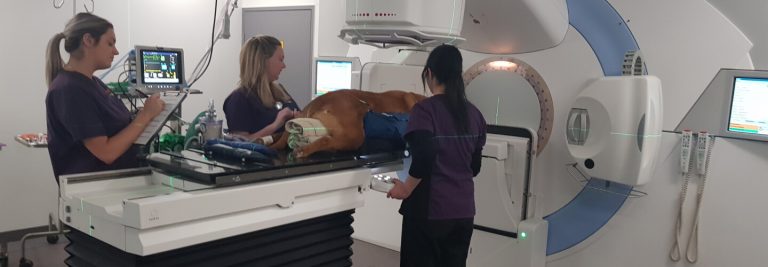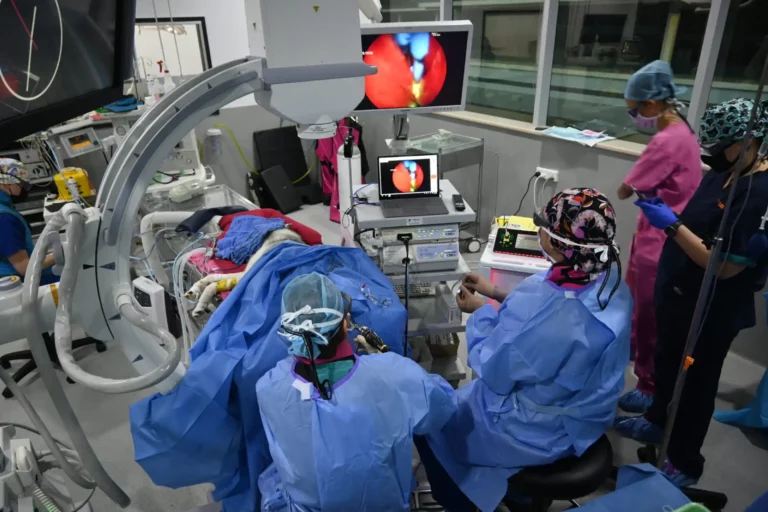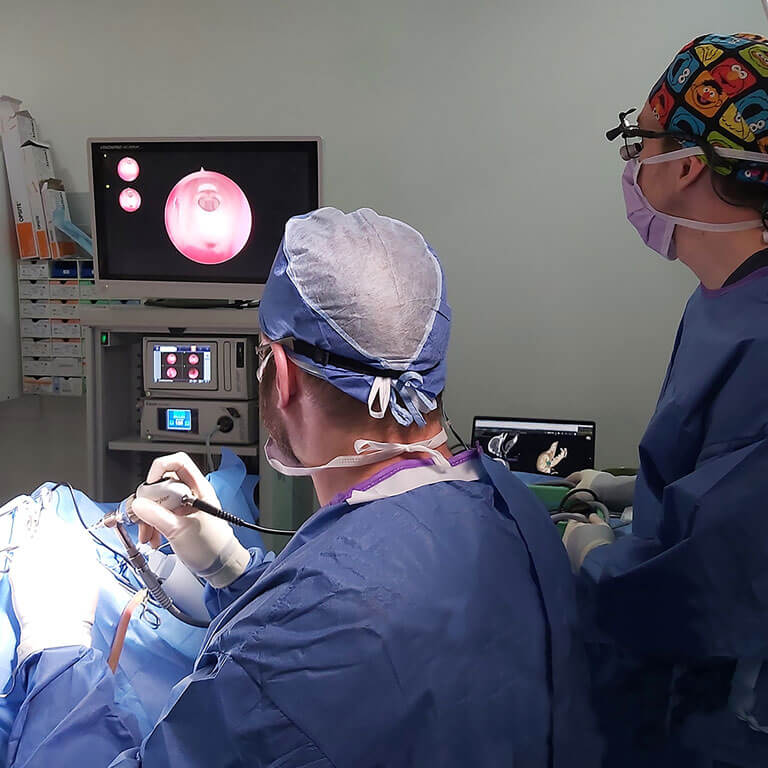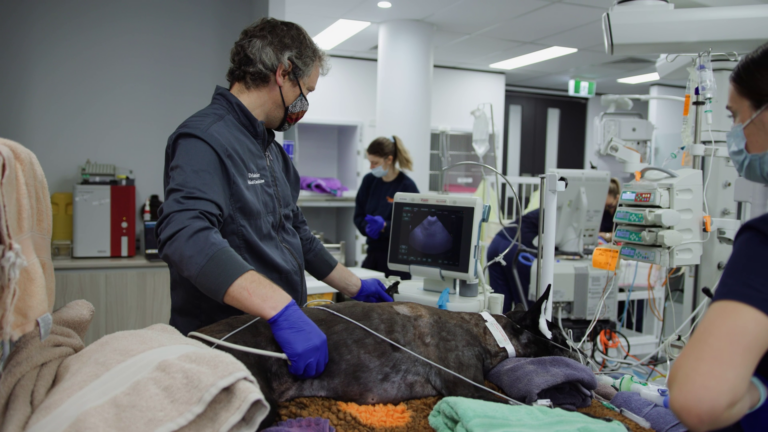Surgical Oncology - Animal Cancer Treatment
SASH Surgical Oncology highlights:
- Specialist surgical removal of tumours and reconstruction of tissues
- The only Specialist in Surgery with additional training in surgical oncology in NSW
- Supported by Specialists in Anaesthesia, Diagnostic Imaging, and more
- Part of the SASH Cancer Centre, capable of also offering medical and radiation treatment options
To best serve the needs of pets with cancer, and to support the people who love and care for them, we strive to offer compassion and understanding, to provide guidance to empower decision making, and to give pets and their families access to the most appropriate and up to date treatment options at our dedicated Animal Cancer Centre.
We recommend visiting our Animal Cancer Centre page to find out more about how our Medical, Surgical and Radiation Oncology teams work together to help families and referring veterinarians when pets are diagnosed with cancer.
The information below provides more detail about our Surgical Oncology services.
The specialist field known as ‘Surgical Oncology’ involves the surgical removal of tumours, the reconstruction of tissue at the site of the tumour removal, and other interventions that assist with tumour management. SASH is home to Dr Tristram Bennett, one of a small handful of veterinary Specialist Surgeons in Australia who has further trained in the highly specialised field of Surgical Oncology. Dr Tristram and his colleagues (including other Specialist Surgeons) are part of the Surgical Oncology team who also work closely with Specialist Anaesthetists and a highly skilled team of nurses.
Surgery can be a daunting prospect. However, it can also be a powerful tool for improving the quality of life of a pet with cancer. Helping pets to live their best life is always the key consideration when any form of surgical intervention is recommended as part of a patient’s treatment plan.
Surgical Oncology is intimately entwined with the other arms of oncology (Medical and Radiation Oncology). When a diagnosis of cancer is first made or suspected, it is not always clear whether the best approach to treatment will involve medical therapies, radiation, surgery or a combination of these options. Tissue sampling (biopsy or cell collection) conducted at this early stage can influence the outcome of any subsequent surgery and needs to be planned just as carefully as the surgery itself. We strongly encourage our referring veterinarians contact us before performing these diagnostic tests, to discuss how they may impact the surgical options for the patient.
Once a diagnosis has been made, and the type and stage of the tumour have been identified, the suitability of surgery and other types of therapy can be determined. We are fortunate at SASH that our in-house Specialist Medical, Surgical and Radiation Oncology teams can collaborate in developing the most appropriate recommendations for individual pets. This multi-disciplinary, cooperative approach gives families the information they need from the outset, to help them make choices with confidence, and gives pets access to the highest standards of integrated oncology care.
What does cancer surgery involve?
Surgery can involve several different levels of intervention. In determining the most appropriate approach, we take many things into account including the type of tumour and its behaviour (e.g., existing or likelihood to spread), as well as its location and size. We are also very mindful of the goals that families have for the treatment of their pet, considering all relevant factors including any concurrent disease.
The levels of surgical intervention can involve:
- Wide excision – removal of the tumour and a relatively large amount of surrounding tissue. This helps to prevent the tumour from recurring by removing diseased tissue that may not be visibly affected.
- Marginal excision – removal of the tumour and a relatively small amount of associated tissue. For example, this might be recommended for tumours in locations where wide excision is difficult.
- Debulking (cytoreduction) – sometimes complete removal of the tumour is not possible or ideal. In these cases, surgical reduction of the bulk of the tumour can be used in combination with other therapies such as radiation.
- Interventional therapies – these include procedures that alleviate undesirable consequences of the presence of a tumour (e.g. placing a stent to relieve problems caused by a tumour pressing on the urinary passages), redirection of structures such as urinary passages , and specialised procedures for delivering chemotherapy drugs directly to the site of a tumour.
Following tumour removal, the tissues at the surgical site need to be reconstructed. This requires careful planning, often supported by pre-operative advanced imaging such as CT/MRI, also available in-house at SASH. In many cases, reconstruction can be done relatively simply by closing the edges of the surgical wound. More specialised techniques required in some cases include:
- Skin flaps – repositioning of skin near the surgical site to help close wounds resulting from tumour removal
- Skin grafts – relocation of skin from another part of the body to the surgical site
- Bone reconstruction – procedures used to avoid the need for amputation, and to close defects resulting from surgery on the chest/abdominal wall or the skull
- Vascular reconstruction – repair of blood vessels that are affected by a tumour
What happens after surgery?
Great care is taken to manage post-operative pain following any surgical procedure. This is supported by our specialist Anaesthesia team who are extensively experienced in advanced pain control. Our dedicated Critical Care team is also available around the clock for patients requiring intensive post-operative support. This proactive and integrated approach to the comfort and well-being of pets as they recover from surgery is a major priority in the care of our cancer patients. After every procedure, the Surgical Oncology team remains involved in monitoring the patient’s progress and assessment of their healing, and performs any further surgical interventions required as part of their ongoing care.




